STROBE GLASSES
SPORTS REACTION TRAINING
STROBE REFLEX GLASSES
STROBE GLASSES TUTORIAL
What is Saccadic Vision?
Saccadic vision refers to the rapid, jerky movements of the eyes that occur when we shift our gaze from one point to another. These movements, called saccades, allow us to quickly and accurately scan our environment and focus on specific objects or details.
In other words, this is how an athlete is able to predict where a moving object is going.
Eg. A hitter at the plate isn't swinging at where the ball is out of the pitcher's hand, rather they are swinging at where the ball will be at point-of-contact.
This is why so much of vision in sports is about prediction, anticipation, and reaction.
Saccadic vision refers to the rapid, jerky movements of the eyes that occur when we shift our gaze from one point to another. These movements, called saccades, allow us to quickly and accurately scan our environment and focus on specific objects or details.
In other words, this is how an athlete is able to predict where a moving object is going.
Eg. A hitter at the plate isn't swinging at where the ball is out of the pitcher's hand, rather they are swinging at where the ball will be at point-of-contact.
This is why so much of vision in sports is about prediction, anticipation, and reaction.
Weight Training For Your Eyes.
Sports strobe glasses utilize liquid crystal lenses controlled by electronic circuitry. These glasses intermittently block and allow light to pass through, challenging an athlete's visual processing system.
Using our app, you can customize the frequency and duration of occlusion or Strobe lens speed.
Electronic Control: The glasses are equipped with electronic circuitry that controls the application of an electric field to the liquid crystal lenses. This electric field influences the alignment of the liquid crystal molecules, affecting the transparency of the lenses.
Intermittent Occlusion: When the electric field is applied, the liquid crystal molecules align in a way that makes the lenses opaque, blocking light from passing through. When the electric field is turned off, the liquid crystals return to a different alignment, allowing light to pass through the lenses.
Adjustable Frequency and Duration: The electronic control system allows users to adjust the frequency and duration of the lens occlusion. Athletes can customize the training experience by setting the glasses to intermittently block their vision at specific intervals.
Training Effect: By intermittently obstructing the visual field, sports strobe glasses challenge the athlete's visual processing system. This kind of visual disruption is believed to enhance cognitive functions, including reaction time, hand-eye coordination, and overall visual awareness.
Adaptation and Improvement: Regular use of sports strobe glasses encourages neuroplasticity, where the brain adapts to the altered visual input. Over time, athletes may experience improved visual processing and performance.

a new way to think about practice.
WEIGHT TRAINING FOR YOUR EYES.
Choose your flicker SPEED
Recommended Lens Speed

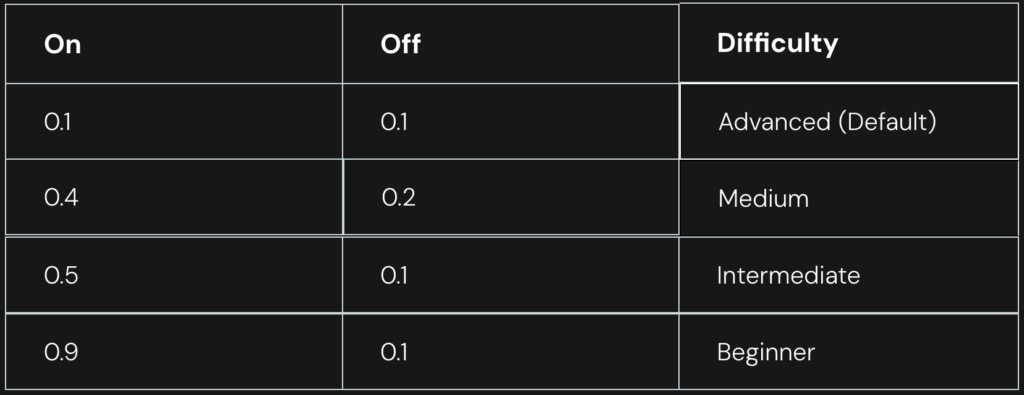
Choose A STROBE STYLE
lENS STROBE TYPE

In tandem
Goal: To minimize visual information and force-enhanced predictive skills while increasing intention and focus on sport-specific tasks.
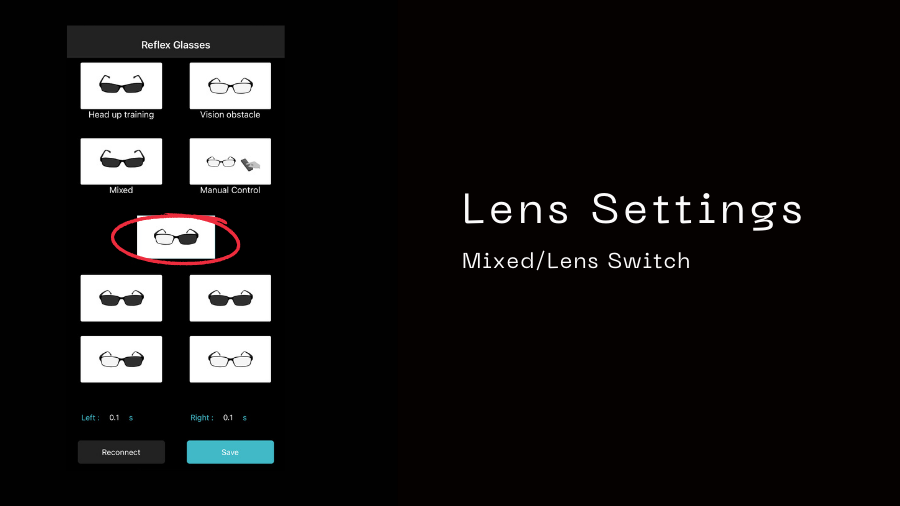
Lens Switch
Goal: To train non-dominant left eye.
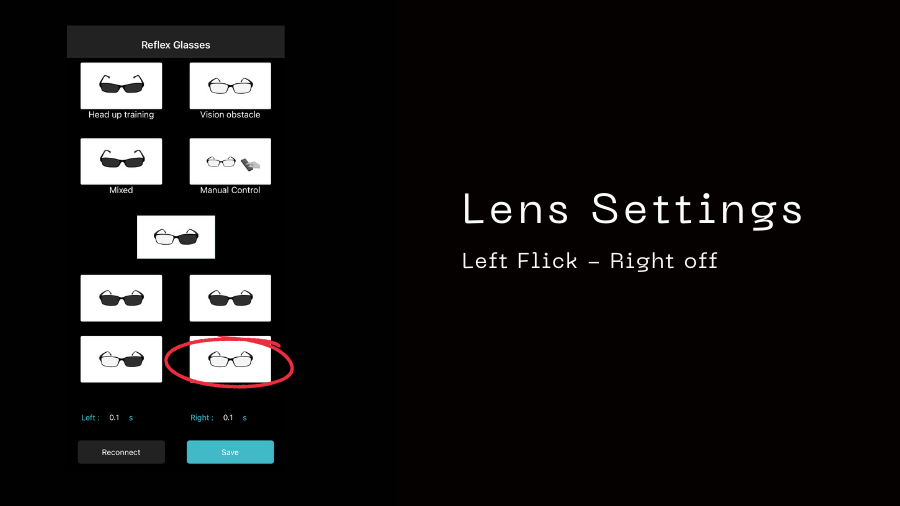
Left Flick - Right on
Goal: To train non-dominant left eye.
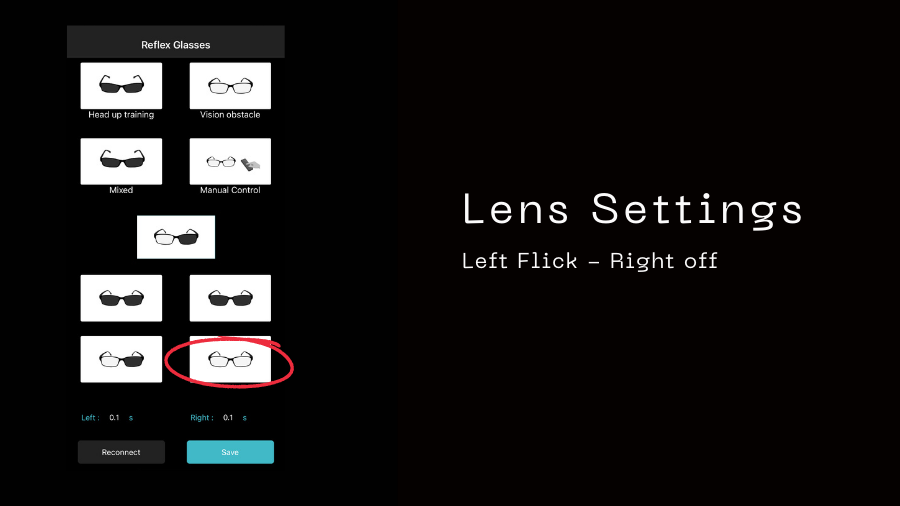
Left Flick - Right off
Goal: To train non-dominant left eye.
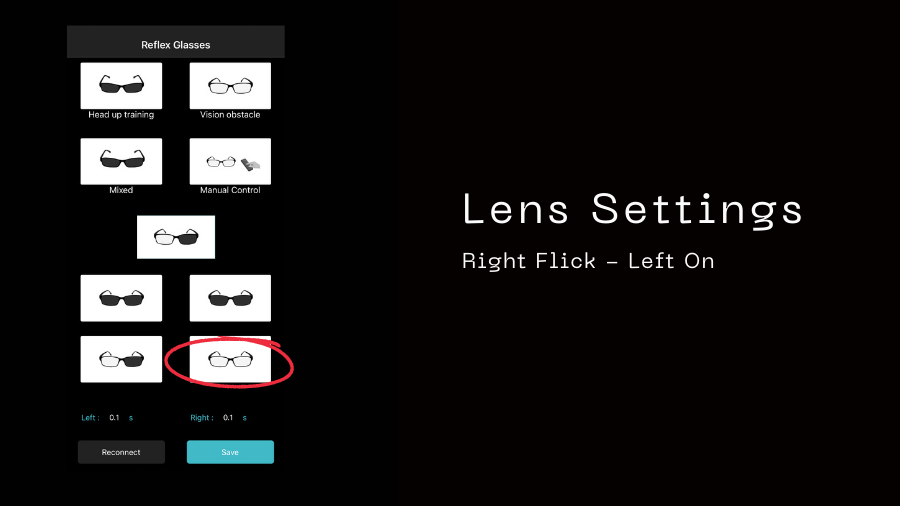
Right Flick - Left On
Goal: To train non-dominant right eye.

Right Flick - Left off
Goal: To train non-dominant right eye.
FREQUENTLY ASKED QUESTIONS
What do Strobe Glasses do?
Improves reaction time: When the brain is only given a brief glimpse of visual information, it has to work harder to process it. This can lead to faster reaction times, as the brain learns to anticipate what is coming next.
Enhances visual acuity: Strobe glasses can also help to improve visual acuity, or the ability to see details. This is because the flashing light forces the eyes to focus more precisely.
Boosts peripheral vision: Peripheral vision is the ability to see objects that are not directly in front of you. Strobe glasses can help to improve peripheral vision by training the eyes to take in more information from the side.
Do Strobe Glasses work?
You bet they do! Think of them like weight training for the eyes. So much of being an elite athlete is developing elite visual skills. It's not just about having good eye sight. Great vision skills also consists of pattern recognition and prediction.
What age are Strobe Glasses for?
As soon as an athlete is participating in sports that involve moving objects, Strobe Glasses will help with increasing the difficulty of training and practice.
Do Strobe Glasses help with hitting a baseball?
No doubt! Recognizing spin, speed, and location efficiently is a non-negotiable with reaching peak performance at the plate. Our Reflex Strobe Glasses will also help with increasing the difficulty of glove work and complimentary vision training drills.
What if they break?
We got you. Just send us a photo, and we'll replace it. Easy peasy. Your success is our success!
What are the potential dangers if I am prone to experiencing seizures?
Even though we use the word "Strobe" our Reflex Strobe Glasses does not utilize light emission in any way.
Instead, it functions as a device with shutters that block out light.
Throughout the history of both the Reflex Strobe Glasses and other Strobe training glasses, there has not been a singular reported instance of the product causing a seizure.
Photosensitive seizures are typically most triggered by stimulus frequencies ranging from 15 to 20 Hz.
The default frequency range of the Senaptec Strobe is 1 to 6 Hz, which significantly deviates from the commonly associated seizure range.
Nevertheless, for individuals with a history of seizures induced by light exposure, it is advised to abstain from using the Senaptec Strobe as a precautionary measure.
Should you harbor concerns regarding your medical condition, it is recommended to consult your healthcare provider first before incorporating our Reflex Strobe Glasses.
How many flashes per second?
The fastest lens speed is around 200 milliseconds so around 5 quick flashes per second!

applied vision sports
©Applied Vision Sports LLC. All Rights Reserved